
Lot 140
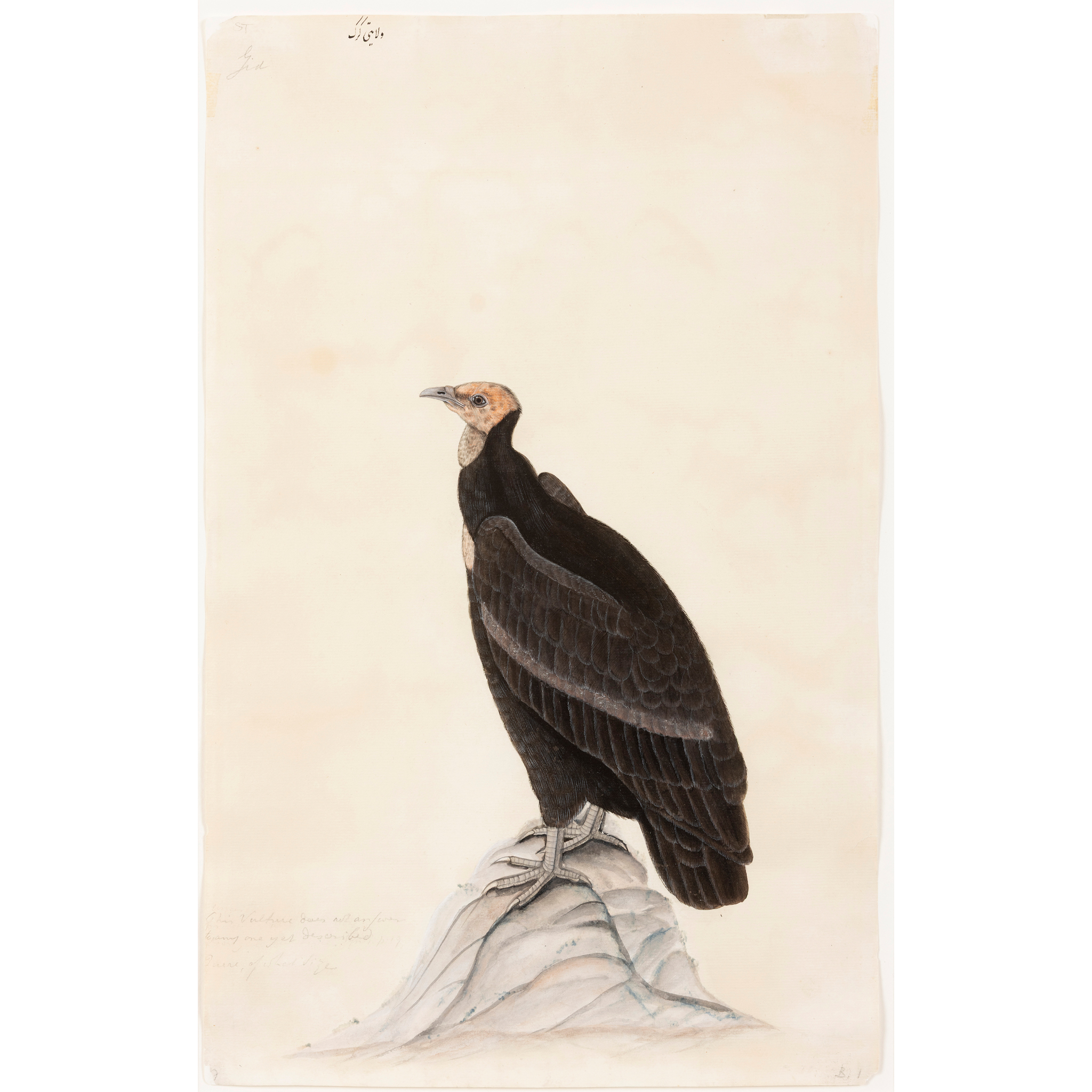
AN INDIAN VULTURE
INDIA, COMPANY SCHOOL, CALCUTTA OR BARRACKPORE, CIRCA 1803
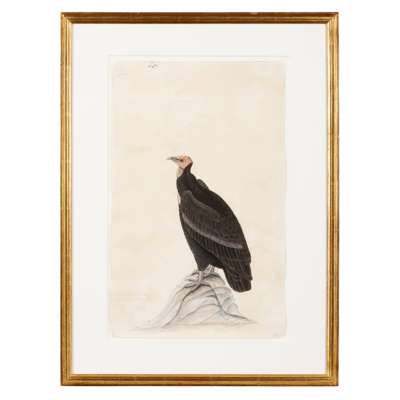
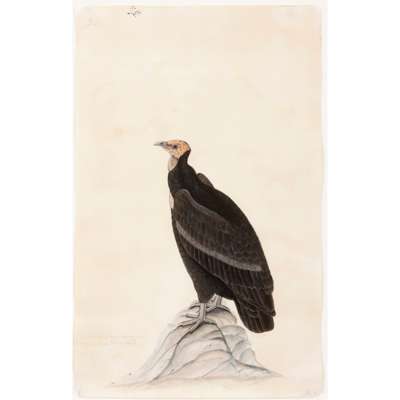
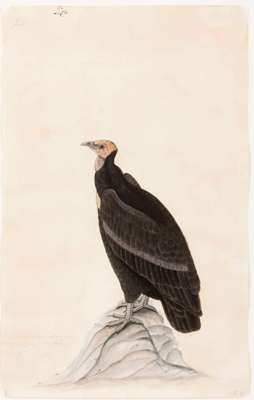




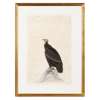
Auction: 11 June 2025 from 10:00 BST
Description
gouache on paper, inscribed in ink to the top of the sheet in Persian: vibyati kwik, which translates as “Foreign vulture or provincial vulture”, mounted, glazed and framed
Dimensions
47cm x 29.5cm
Provenance
George Annesley, 9th Viscount Valentia (1769-1844).
Collection of Stuart Cary Welch, New England, 1994.
Footnote
A mysterious and macabre creature, the vulture has long been a point of interest for bird enthusiasts, as well as art enthusiasts. With the vulture’s association with death and their presence in multiple continents, they are an interesting subject matter that can be found in the art of many cultures. The birds whose features have led us to classify them as vultures, inhabit Asia, Africa, Europe, North and South America. New World and Old World vultures have slight differences including wing length, the length of the hind claws and the structure of the nostrils but were nevertheless assumed to be related. Today, New World vultures are currently considered to be a sister-group to the large family which includes hawks, eagles and Old-World vultures. It is an important reminder that, just because different animal groups are adapted to the same ecological niche and therefore look the same, it does not mean that they are necessarily related; this is called convergent evolution.
The vulture pictured here is something of an enigma. The large wings with relatively short primary flight feathers which do not extend beyond the tip of the tail, and its relatively long hind toe suggests that it should be an Old-World vulture. The fact that it is the subject of an Indian painting one would expect it to be an Asian species. But it is not. The closest Old-World species is the African Hooded Vulture Necrosyrtes monachus, but their “hood” consists of pale brown down and not black feathers. The black colouration and red head are reminiscent of an American Turkey Vulture or another of the genus Cathartes, but the nostril shape and wing markings do not fit these either. The bill is unhooked, the fleshy cere on the bill is behind, and not surrounding the nostril, and, although the head is coloured red, it gives every indication of being covered in feathers which surround the bill and eye and completely mask the ear opening. Neither are there any slender-billed vulture species with anything resembling a wing bar, though it is possible that this marking is intended to represent a line of shiny iridescence. This is a bird which does not exist, possibly painted from a description or recollection of a vulture once seen. It is an amalgamation of different species, possibly inspired by famous paintings of vultures, such as those of the Mughal artist Mansur in the celebrated Kevorkian Album. It was not drawn from direct observation of a vulture but is, nevertheless, a beautiful and interesting painting.
This painting comes from an important series of natural history studies made for George Annesley, 2nd Earl of Mountnorris and Viscount Valentina, when he made a private tour of India from 1802-1806. He was a keen amateur natural historian and visited many botanists and zoologists during his trip, chronicling his travels in three volumes published in 1809 entitled Voyages and Travels to India, Ceylon and the Red Sea, Abyssinia and Egypt in 1802-06. In Calcutta there were a number of English residents who shared his passion in natural history, and Annesley’s visits to local aviaries and menageries inspired him to commission many natural history drawings, mostly of birds, several of which have subsequently found their way into other collections. Annesley gifted two paintings to Lord Wellesley when he stayed with him in 1803 and saw the menagerie in Barrackpore. These are now in the British Library in London and published in Mildred Archer, Natural History Drawings in the India Office Library, 1962, p. 96. There is another painting in the Chester Beaty Library published by Linda York Leach, Mughal and other Indian Paintings from the Chester Beaty Library, 1995, vol. ii, pp. 761-762.







